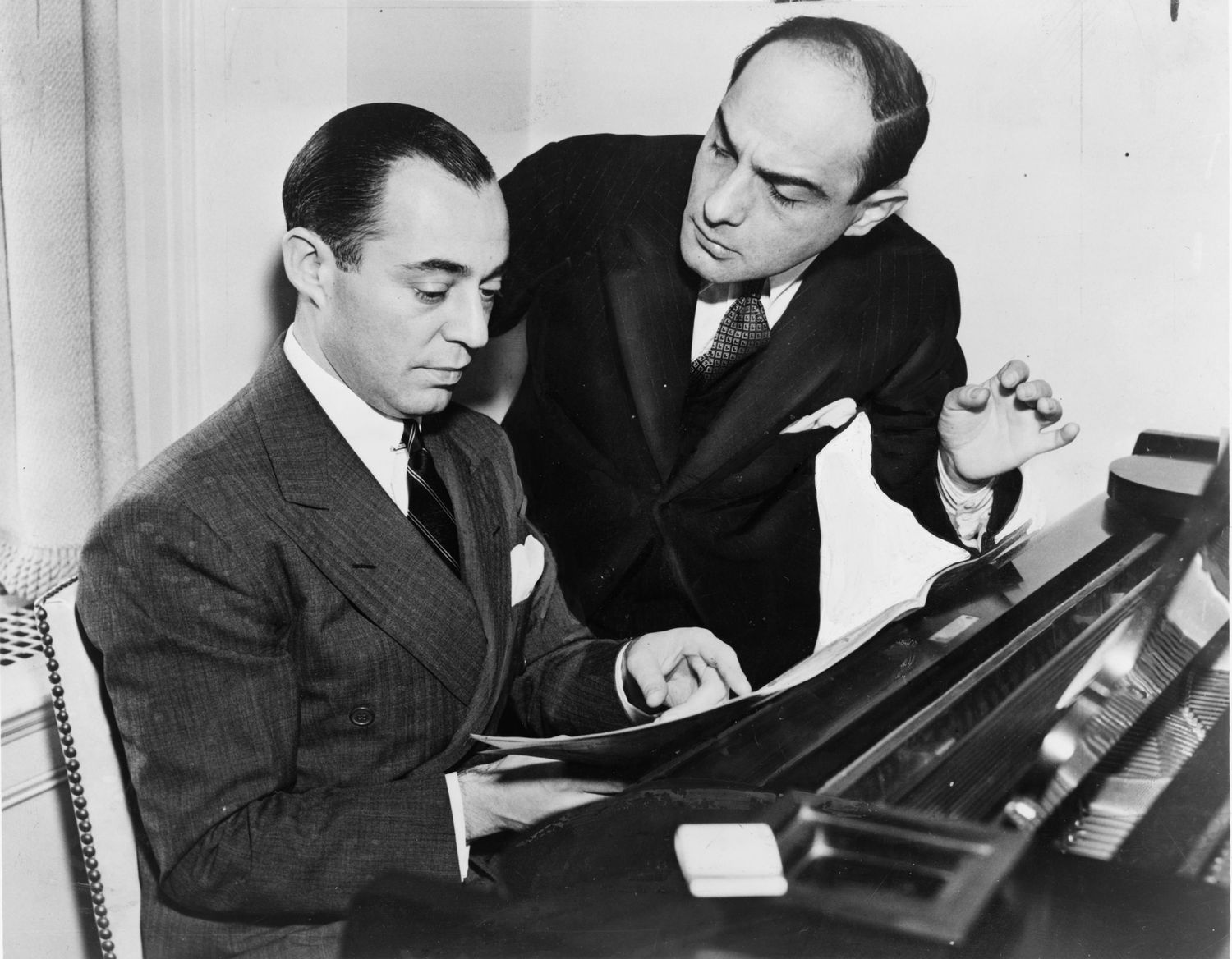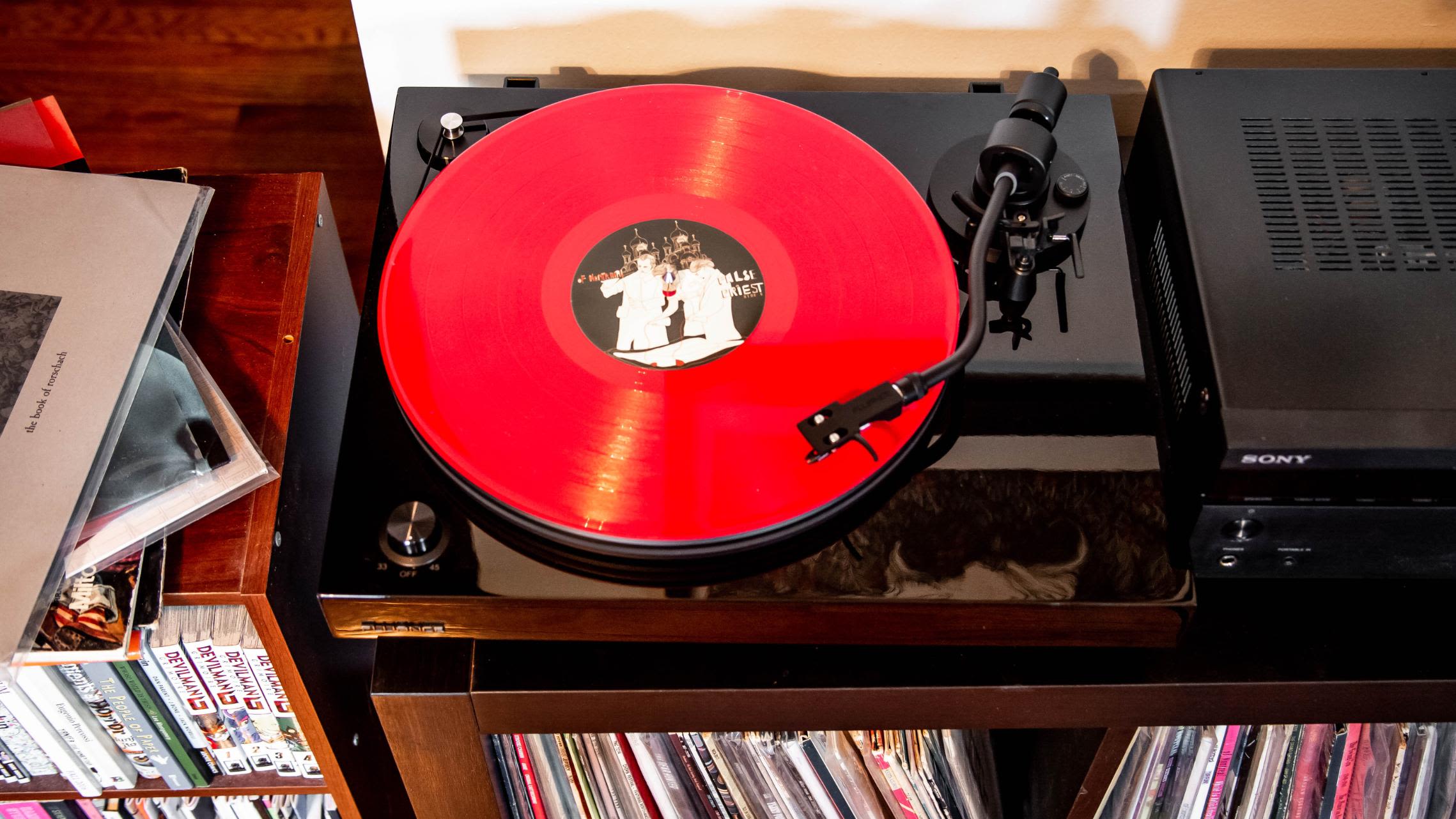Home>Events & Info>Chamber Music>What Is A Major Difference Between Chamber Music And Symphonic Music


Chamber Music
What Is A Major Difference Between Chamber Music And Symphonic Music
Modified: February 24, 2024
Discover the key distinction between chamber music and symphonic music – explore the intimate ensemble dynamics of chamber music, contrasting the grand orchestral arrangements of symphonic compositions.
(Many of the links in this article redirect to a specific reviewed product. Your purchase of these products through affiliate links helps to generate commission for AudioLover.com, at no extra cost. Learn more)
Table of Contents
Introduction
Chamber music and symphonic music are two distinct genres within classical music that have captivated audiences for centuries. While they share common roots in the classical tradition, they differ in several key aspects, from the number of performers to the performance venues and overall experience for the audiences. Understanding these differences can enrich our appreciation for both genres and shed light on their unique qualities.
Chamber music, as the name suggests, is intimately scaled and performed by a small ensemble of musicians. Derived from the term “camera” meaning room, it was originally meant to be performed in small, private spaces like salons or wealthy patrons’ chambers. In contrast, symphonic music, also known as orchestral music, is performed by a large ensemble known as an orchestra, typically consisting of strings, woodwinds, brass, and percussion instruments.
One of the major differences between chamber music and symphonic music lies in the number of performers involved. Chamber music is designed for a small group of musicians, usually ranging from two to nine performers. This smaller ensemble allows for a more intimate and intricate interaction among the musicians, creating a sense of musical conversation.
On the other hand, symphonic music requires a much larger group of musicians, sometimes numbering over a hundred. This vast ensemble allows for a rich and powerful sound, capable of producing a wide range of dynamic and sonoric possibilities. The sheer size and variety of instruments make symphonic music a grand spectacle.
The instrumentation is another significant distinction between chamber music and symphonic music. In chamber music, the choice of instruments is usually limited to a few specific types, such as string quartets, piano trios, or wind ensembles. This limitation allows for a more focused exploration of the unique characteristics of each instrument, as well as a balanced interplay among them.
On the contrary, symphonic music utilizes a diverse range of instruments, including strings, woodwinds, brass, and percussion. The combination of these different sections provides a broad palette of tonal colors and expressive possibilities, enabling composers to create grand and sweeping musical landscapes.
At this point, it may be important to note the HTML validation.
Definition of Chamber Music
Chamber music is a genre of classical music characterized by its intimate and small-scale nature, typically performed by a small ensemble of musicians. The term “chamber music” derives from the Latin “camera” meaning room, as this genre was originally intended to be performed in small, private spaces.
Chamber music compositions are specifically crafted to be performed by a limited number of musicians, usually ranging from two to nine performers. The most common types of chamber music ensembles include string quartets, piano trios, woodwind quintets, and brass quintets.
A string quartet, the most renowned form of chamber music ensemble, typically consists of two violins, a viola, and a cello. This combination allows for a delicate balance of melodic, harmonic, and rhythmic elements, creating a nuanced and intricate musical dialogue.
Chamber music compositions often showcase the individual talents and virtuosity of each musician, as well as their ability to seamlessly blend and synchronize their performance. The absence of a conductor or director in chamber music requires the performers to rely on their musical intuition, active listening, and mutual communication to create a cohesive and expressive performance.
In terms of musical structure, chamber music compositions tend to be more concise and tightly organized compared to other genres. They often comprise several distinct movements, each with its own character, tempo, and thematic material. These movements can range from lively and energetic to introspective and lyrical, showcasing a diverse range of emotions and musical ideas.
Chamber music offers a unique listening experience for audiences, enabling them to be fully immersed in the intricate interplay between instruments and the subtleties of musical expression. The intimate setting allows for a close and personal connection between performers and listeners, enhancing the emotional impact of the music.
Throughout history, numerous composers have made significant contributions to the world of chamber music. Prominent composers such as Wolfgang Amadeus Mozart, Ludwig van Beethoven, Franz Schubert, and Johannes Brahms have composed masterful works that have become cornerstones of the chamber music repertoire.
In summary, chamber music is a genre that celebrates the art of collaboration and musical conversation among a small group of skilled musicians. Its intimate nature, focused instrumentation, and rich musical dialogue make it a captivating and cherished form of classical music.
Definition of Symphonic Music
Symphonic music, also known as orchestral music, is a genre of classical music characterized by its large-scale compositions and performance by a symphony orchestra. The term “symphony” originates from the Greek word “symphonia,” meaning agreement or harmony.
Symphonic music is typically performed by a symphony orchestra, a massive ensemble consisting of strings, woodwinds, brass, and percussion instruments. The orchestra is led by a conductor, whose role is to interpret the music and guide the musicians through the performance.
Compositions in the symphonic genre are known for their grandeur, complexity, and expansive structures. They often feature multiple movements, each with its own distinct theme, tempo, and mood. This allows for a wide range of musical exploration and development within a single piece.
The instrumentation in symphonic music is expansive, allowing for a great variety of tonal combinations and expressive possibilities. The string section forms the backbone of the orchestra, providing the lush and rich harmonies. Woodwinds introduce melodies and add color and texture to the music. Brass instruments bring power, brilliance, and majesty, while percussion instruments contribute rhythmic energy and impact.
One of the defining characteristics of symphonic music is the presence of a conductor. The conductor acts as the musical director, shaping the interpretation of the piece and ensuring that the orchestra performs in unison. They use various conducting techniques to communicate dynamics, tempos, and artistic nuances to the musicians, enhancing the overall coherence and cohesion of the performance.
Symphonic music is often associated with theatricality and dramatic storytelling. It has the ability to evoke a wide range of emotions, from profound sadness to exuberant joy, through its rich orchestration and dynamic contrasts. Symphonic works can transport listeners on an emotional and imaginative journey, painting vivid sonic landscapes.
Throughout history, renowned composers such as Ludwig van Beethoven, Pyotr Ilyich Tchaikovsky, Gustav Mahler, and Igor Stravinsky have made significant contributions to the symphonic repertoire. Their compositions push the boundaries of orchestral music, exploring new harmonic language, innovative forms, and groundbreaking sonic textures.
In summary, symphonic music represents the grandeur and power of the symphony orchestra, weaving together a multitude of instruments in a harmonious and expressive manner. Its expansive structures, rich orchestration, and dramatic potential make it a captivating and immersive form of classical music.
Number of Performers
The number of performers is a significant distinction between chamber music and symphonic music. Chamber music, by nature, is designed for a small group of musicians, typically ranging from two to nine performers. This limited ensemble size allows for a more intimate and intricate musical interaction among the musicians.
In chamber music ensembles such as a string quartet or a piano trio, each musician plays a crucial role in shaping the overall sound and musical interpretation. The small number of performers allows for a delicate balance and cohesion between the instruments, creating a sense of musical conversation and unity.
On the other hand, symphonic music requires a much larger group of musicians. A symphony orchestra can consist of over a hundred performers, including strings, woodwinds, brass, and percussion sections. This vast ensemble size enables a grand and powerful sound, capable of producing a wide range of dynamic and sonoric possibilities.
The large number of performers in a symphony orchestra allows for a diverse palette of musical colors and textures. Different sections of the orchestra, such as the strings, woodwinds, and brass, contribute their unique timbres and blend together to create a rich and immersive sonic experience. The presence of a larger ensemble also enhances the dramatic impact and intensity of symphonic compositions.
In chamber music performances, the smaller number of performers means each musician has a more prominent role, allowing their individual talents and musicality to shine. There is a heightened level of interaction and interplay among the performers, as they rely on each other to create a cohesive and expressive performance.
While symphonic music may have a greater number of performers, the musicians in an orchestra still collaborate closely to achieve a unified and cohesive sound. The conductor plays a crucial role in coordinating the ensemble, interpreting the music, and guiding the performers to maintain synchronization and musical expression.
In summary, the number of performers sets chamber music and symphonic music apart. Chamber music embraces the intimacy and musical dialogue of a small ensemble, while symphonic music utilizes the power and versatility of a large symphony orchestra. Both settings offer unique opportunities for musicians to collaborate and create captivating musical experiences.
Instrumentation
The instrumentation in chamber music and symphonic music differs significantly, contributing to the distinct characteristics of each genre. In chamber music, the choice of instruments is typically limited to a few specific types, allowing for a more focused exploration of their unique qualities and interactions.
Chamber music ensembles come in various forms, such as a string quartet, piano trio, woodwind quintet, or brass quintet. These ensembles are composed of specific instruments that are carefully selected to achieve a balanced and complementary sound.
For example, a string quartet consists of two violins, a viola, and a cello. This combination allows for a rich interplay of melodic, harmonic, and rhythmic elements, as well as a nuanced blend of timbres. The limited instrumentation in chamber music provides an opportunity for each instrument to take on different roles, alternating between leading and accompanying melodies and harmonies.
On the other hand, the instrumentation in symphonic music is much more extensive and diverse. A symphony orchestra typically includes four main sections: strings, woodwinds, brass, and percussion.
The string section forms the core of the orchestra, consisting of violins, violas, cellos, and double basses. They provide the foundation of the orchestral sound, playing both melodic and accompanying lines with a wide range of expressive possibilities.
The woodwind section includes instruments such as flutes, oboes, clarinets, and bassoons. These instruments add color, texture, and lyrical melodies to the orchestral palette. They can evoke a sense of serenity, playfulness, or wistfulness, depending on the musical context.
The brass section incorporates instruments like trumpets, French horns, trombones, and tubas. With their bold and resonant sound, brass instruments bring power, drama, and grandeur to symphonic compositions. They often play majestic fanfares, soaring melodies, or provide rich harmonic support.
The percussion section includes a variety of instruments, such as timpani, snare drums, cymbals, and others. Percussion instruments add rhythmic drive, accents, and special effects to symphonic music, enhancing the overall rhythmic vitality and dramatic impact.
The extensive instrumentation in symphonic music allows composers to explore a wide range of sonic possibilities, utilizing different combinations of instruments to create varied textures, dynamic contrasts, and expressive moments.
In summary, chamber music and symphonic music have different instrumentation characteristics. Chamber music utilizes limited ensembles with specific instrument combinations for intimate and focused musical exploration, while symphonic music employs a more extensive and diverse array of instruments to create grand and dynamic orchestrations.
Complexity and Texture
Complexity and texture are important factors that differentiate chamber music from symphonic music. While both genres have their own unique aspects, these elements play a significant role in shaping the overall musical experience.
In chamber music, the limited number of performers allows for a more intimate exploration of musical complexities. With fewer instruments and voices involved, chamber music compositions often showcase intricate contrapuntal lines, intricate harmonies, and elaborate melodic interactions. The interplay between the musicians is highly nuanced, allowing for detailed musical conversations and tight ensemble playing.
Chamber music compositions also tend to emphasize the individuality and virtuosity of each performer. Musicians often have opportunities to showcase their technical skills and interpretation, as they are not overshadowed by a large orchestra. This spotlight on individual performers adds an additional layer of complexity and expression to the overall texture of the music.
On the other hand, symphonic music tends to have a more expansive and multi-layered texture due to the larger number of performers and instruments involved. The symphony orchestra offers a broad sonic palette, allowing composers to create rich and lush textures through the combination of different sections.
The orchestral texture in symphonic music can vary from thick and dense to translucent and transparent, depending on the composition. Composers take advantage of the diverse range of instrumental colors and timbres, layering them to create complex harmonies, robust chords, and intricate counterpoint.
Additionally, symphonic music often explores contrasting textures, alternating between full orchestral tutti sections and delicate solo passages. These shifts in texture create dynamic contrasts, enhancing the emotional impact of the music and adding layers of depth to the overall composition.
Furthermore, the role of the conductor in symphonic music plays a crucial part in shaping the complexity and texture of the performance. The conductor guides the musicians in maintaining unity, balance, and precise execution, ensuring that the various instrumental voices blend harmoniously and contribute to a cohesive and well-balanced overall texture.
Ultimately, the level of complexity and texture in both chamber music and symphonic music contributes to the richness and depth of the compositions. Chamber music thrives on the intricate interplay and virtuosity of a small group of performers, while symphonic music harnesses the power and diversity of a full orchestra to create layered and dynamic musical experiences.
Role of Conductor
The role of the conductor is a significant distinction between chamber music and symphonic music, influencing the dynamics and coordination of the performance. In chamber music, the absence of a conductor allows for a different type of musical collaboration, relying on the musicians’ individual interpretation and communication.
In a chamber music ensemble, such as a string quartet or a piano trio, the performers collectively shape and interpret the music. They rely on active listening, musical intuition, and mutual communication to create a unified and expressive performance. Each musician has the responsibility to synchronize their playing with the others, ensuring that the ensemble maintains a cohesive and balanced sound.
In the absence of a conductor, decisions regarding tempo, dynamics, phrasing, and musical interpretation are made collectively. This democratic approach allows for a more intimate and collaborative musical experience, enabling each musician to contribute their unique perspective to the performance.
On the other hand, the role of the conductor is prominent in symphonic music. The conductor acts as the musical director and provides leadership to the orchestra, shaping the interpretation and overall sound of the performance. They are responsible for conveying their artistic vision, guiding the musicians, and ensuring that the performance meets their desired musical expression.
The conductor’s primary role is to coordinate and unify the large ensemble. They use their conducting gestures, such as hand movements, facial expressions, and body language, to communicate their interpretations and convey musical ideas to the musicians.
Through their conducting, the conductor sets the tempo, determines the dynamics, and shapes the phrasing of the music. They also play a crucial role in cueing different sections of the orchestra, ensuring precise entrances, transitions, and overall ensemble cohesion.
Moreover, the conductor’s interpretation and leadership influence the overall musical interpretation of the symphonic repertoire. They delve into the composer’s intentions, study the score, and bring their own artistic insights to shape the performance. The conductor’s knowledge and understanding of the musical language and style of the piece guide the musicians and bring the composition to life.
The presence of a conductor in symphonic music provides a centralized authority and coordination, resulting in a more unified and cohesive performance. The conductor’s expertise, rehearsal techniques, and ability to inspire the musicians contribute to the overall quality and impact of the symphonic music experience.
In summary, the role of the conductor plays a vital part in symphonic music, while chamber music relies on the collaborative efforts of the musicians. The conductor’s leadership and guidance ensure the coordination and artistic interpretation of the performance in symphonic music, while chamber music thrives on the collective decision-making and communication among the individual musicians.
Performance Venues
The choice of performance venues is another factor that distinguishes chamber music from symphonic music. The size and nature of the ensembles, as well as the intended listening experience, often influence the selection of suitable venues for each genre.
Chamber music, with its intimate and conversational nature, is ideally suited for smaller and more intimate settings. Traditional chamber music performances were held in private residences, such as salons, drawing rooms, or chamber halls. These venues provided an intimate atmosphere that allowed the audience to closely connect with the musicians and experience the nuances of the performance.
Today, chamber music concerts are held in a variety of venues, including small concert halls, recital rooms, art galleries, or even private homes. The goal is to create an intimate and acoustically favorable environment that allows the subtleties of the music to be heard and appreciated. These smaller venues often provide an up-close and personal experience, enhancing the intimacy and connection between the performers and the audience.
On the other hand, symphonic music requires larger venues to accommodate the vast number of musicians and the grandeur of the sound. Symphony orchestras typically perform in dedicated concert halls or large theaters with seating capacities ranging from a few hundred to several thousand people.
These concert halls are designed to optimize the acoustics, ensuring that the sound from the orchestra reaches every corner of the venue and creates an immersive experience for the audience. The architecture and acoustic treatments of these venues are carefully designed to enhance the resonance, clarity, and balance of the orchestral sound.
Symphony orchestras also perform in outdoor venues, such as amphitheaters or open-air concert spaces, where larger audiences can gather to enjoy the music. These venues may require additional sound reinforcement systems to ensure that the music is heard clearly by everyone present.
Furthermore, symphonic music is often associated with large-scale productions that incorporate visual elements, such as elaborate stage sets, lighting, and projections. These elements are more feasible in larger concert halls or venues that can accommodate the technical requirements of the production.
In summary, chamber music thrives in intimate venues that allow for a close connection between the musicians and the audience, while symphonic music requires larger concert halls to accommodate the size and power of the orchestra. The selection of performance venues reflects the intended listening experience and the unique qualities of each genre.
Audience Experience
The audience experience in chamber music and symphonic music concerts can vary significantly due to the nature of the music, the size of the ensemble, and the venue. Each genre offers a distinct and captivating experience for listeners, creating different atmospheres and connections with the music.
In chamber music concerts, the smaller ensemble size and intimate settings provide a unique opportunity for audiences to closely observe and engage with the performers. The proximity to the musicians allows for a more intimate connection, as the audience can see the musicians’ facial expressions, gestures, and interactions.
Chamber music performances often evoke a sense of intimacy, where listeners can appreciate the subtle nuances and interplay between instruments. The smaller acoustic spaces and the absence of amplification contribute to an immersive experience, capturing the delicate intricacies of the music in a personal and immediate way.
With the absence of a conductor, chamber music concerts often have a more interactive and informal atmosphere. Musicians may engage in dialogue or provide insights into the pieces being performed, enhancing the audience’s understanding and appreciation of the music. This interactive element creates a sense of shared experience and connection between the performers and the audience.
On the other hand, symphonic music concerts offer a grand and awe-inspiring experience. The scale of the orchestra, the dynamic range, and the sheer power of the sound create a sonic spectacle that can have a profound impact on the audience.
Symphonic music concerts often take place in grand concert halls or theaters with excellent acoustics, designed to enhance the full orchestral sound. These venues provide a sense of occasion and formality, creating a sense of anticipation and reverence among the audience.
Attending a symphony orchestra performance offers an opportunity to witness the collaboration and coordination of a large group of musicians under the guidance of a conductor. The synchronized movements, the precision, and the unity of the ensemble create a visually captivating and stunning performance.
The emotional range and power of symphonic music can evoke a wide range of feelings and deeply move the audience. From the sublime beauty of a delicate melody to the thunderous impact of a full orchestral climax, symphonic music has the ability to transport listeners and evoke a sense of awe and transcendence.
Additionally, symphonic concerts often feature renowned soloists or guest performers, further enhancing the audience experience. The virtuosic skills of these soloists, combined with the orchestral accompaniment, create memorable moments and highlight the diverse talents within the classical music world.
Both chamber music and symphonic music concerts offer unique and enriching experiences for audiences. While chamber music invites listeners into an intimate musical conversation, symphonic music immerses them in a grand and powerful sonic journey. Regardless of the genre, attending a live classical music performance provides an opportunity to connect with the music and experience the magic of live music-making.
Collaborative vs. Orchestral Dynamics
The dynamics and interaction among musicians differ in chamber music and symphonic music, leading to distinct collaborative dynamics within each genre. Chamber music places a strong emphasis on collaboration and the democratic exchange of ideas among the performers, while symphonic music relies on a hierarchical orchestral structure and the direction of a conductor.
In chamber music, the small ensemble size allows for a high level of interaction, equality, and collaboration among the musicians. Each performer has the opportunity to contribute and shape the performance, making chamber music a truly democratic art form.
Collaborative dynamics are essential in chamber music as the absence of a conductor requires constant communication, active listening, and mutual understanding between the musicians. They must engage in musical dialogue, anticipate each other’s intents, and adapt their playing accordingly to create a unified and cohesive performance.
The democratic nature of chamber music allows for the cultivation of individual artistry within the context of an ensemble. Musicians have the freedom to express their own interpretations, while simultaneously blending their sound and musical ideas with their fellow performers. This collaboration leads to rich and nuanced performances that showcase the unique artistry and musicianship of the ensemble.
In contrast, symphonic music operates within a more hierarchical structure. The presence of a conductor is integral to the orchestral dynamics. The conductor acts as the guiding force, interpreting the music, shaping the ensemble’s sound, and directing the overall performance.
Within a symphony orchestra, musicians are grouped into sections, such as strings, woodwinds, brass, and percussion. Each section has its own dynamics, led by a principal player who often assumes a leadership role. The orchestra follows the conductor’s vision, responding to their guidance and cues.
The conductor’s role is to unify the ensemble, ensuring that the musicians synchronize their playing, dynamics, and phrasing. The conductor’s gestures, facial expressions, and body language direct the orchestra, shaping the sound and expressive qualities of the music.
While a conductor leads the symphony orchestra, collaboration still exists within sections and between musicians. Each section interacts and collaborates with one another to create a cohesive and balanced sound. Musicians within a section collaborate and adjust their playing to achieve alignment, resulting in an ensemble with a blended sound.
The orchestral dynamics of symphonic music allow for a greater depth and complexity of sound due to the larger number of performers. The conductor’s guidance ensures unity and coherence within the orchestra, while still allowing for individual expression within the context of the collective performance.
In summary, chamber music thrives on collaborative dynamics based on equality and mutual understanding among the musicians. The absence of a conductor in chamber music leads to active communication and shared decision-making. On the other hand, symphonic music follows a hierarchical structure, with a conductor guiding the orchestra’s dynamics and interpretation. Despite these differences, both genres showcase the power of collaboration in creating beautiful and impactful musical experiences.
Conclusion
Chamber music and symphonic music are two distinct genres within classical music, each offering a unique and compelling musical experience. Understanding the differences between these genres allows us to appreciate their individual qualities and the intricacies of their performances.
Chamber music, with its small ensemble size and intimate settings, invites listeners into a world of intricate musical conversations. The limited number of performers fosters a collaborative and democratic environment, where each musician’s artistry shines, and the interplay between instruments creates a captivating and nuanced musical dialogue.
Symphonic music, on the other hand, embraces the power and grandeur of the symphony orchestra. The larger ensemble size amplifies the dynamic range and diversity of instrumental colors, leading to expansive and immersive performances. With the conductor at the helm, symphonic music showcases hierarchical orchestral dynamics and allows for intricate orchestration and awe-inspiring musical moments.
Performance venues also play a crucial role in shaping the audience’s experience. Chamber music thrives in intimate settings, creating a direct and personal connection between musicians and listeners. Symphonic music demands larger concert halls to accommodate the scale and power of the orchestra, providing a more formal and grand ambiance.
Both genres offer unique listening experiences, stimulating the senses and emotions in different ways. Chamber music enthralls with its delicate nuances, interwoven melodies, and the intimacy of the performance. Symphonic music captivates with its majestic soundscapes, vibrant orchestration, and the grandeur of the collective ensemble.
In conclusion, chamber music and symphonic music are distinct and captivating genres within classical music. The small ensemble size, collaborative dynamics, and intimate settings characterize chamber music, while the larger ensemble, orchestral dynamics, and grand performances define symphonic music. Each genre has its own appeal and charm, providing listeners with rich and diverse musical experiences that continue to captivate audiences around the world.











